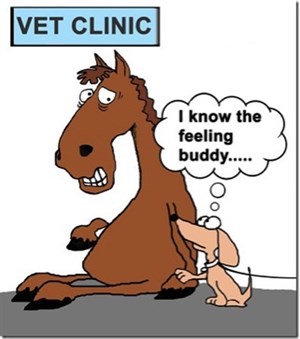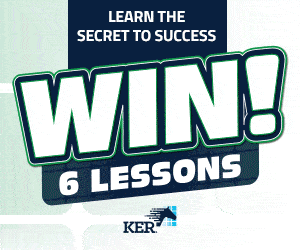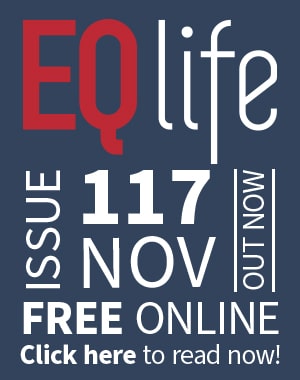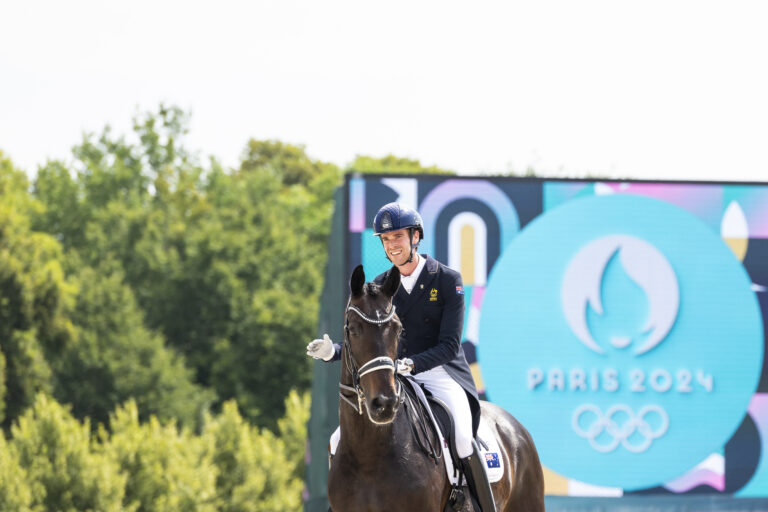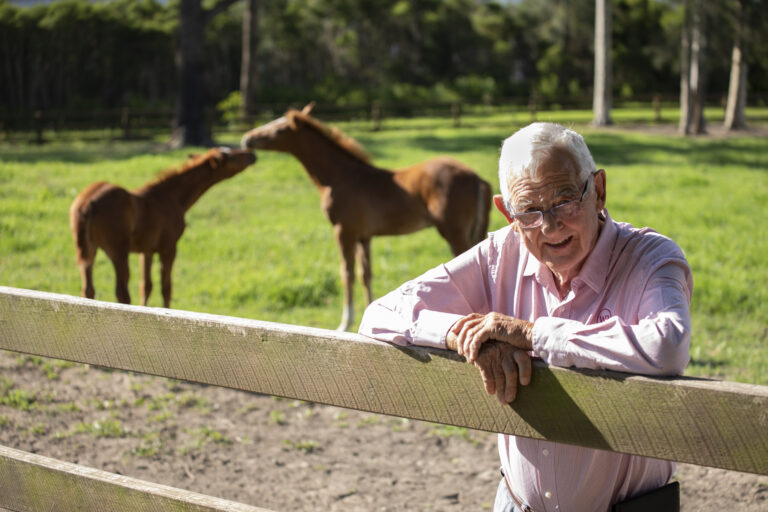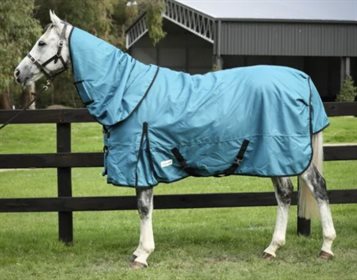Handling separation anxiety in horses is tricky.
© Martin Taankink
Separation anxiety in horses – big deal or minor annoyance?
By Myra King
Most of us have experienced it. You ride out on your horse to the calls of the one, or ones, left behind, disrupting any horses within earshot and stirring up complaints of noise pollution from your neighbours, unless they have horses too! The further away you get, you may begin to feel the growing rumblings beneath your saddle of your horse’s answering heart-breaking ‘missing you already’ whinnyings.
Some horses, like my two, are happy to ride out away from their buddies, but totally upset to be the one left behind. Either running themselves ragged, like my quarab Tom, or weaving back and forth and trying to get out of their yards, like my warmblood Vro. Once he even managed to break through thick wooden rails and injure himself, but more about that later.
The horse which will only travel within eyesight of his buddy poses greater problems. On show days this is annoying, but when riding out alone he’ll concentrate all his energy to getting back to his mate. Refusing to go forward, spinning around, rearing or even bucking. He may resent, or forget, who is onboard, so the ride away from home becomes impossible or downright dangerous.
So what can we do?
As with all things on this planet we cannot fight nature, only work with it. Horses, being herd animals, naturally seek companions and form strong bonds for mating, safety and comfort. Humans have domesticated horses for over four thousand years and bred them for speed, strength and compliance. But they are still horses with strong survival instincts.
Mares come into season and may become distracted or fizzy; stallions will seek mares and some may become difficult to handle in their pursuit of ‘mare’ as their goal. Testosterone and oestrogen are powerful hormones and nature decrees: “All to mate and procreate.” Which is the main basis for herd animals’ and one of nature’s reasons for horse buddy-ship.
“Okay”, I hear you say, “I understand all that, but I’m dealing with a horse acting like this now, and I really don’t know how long I can go on before I put him up for sale.”
Firstly, let’s tackle the far less problematic separation anxiety I’m dealing with – that my two are fine with me riding them out alone, but not when they are (the one) left behind.
The thing making it worse, was that my horses live twenty-four/seven (except when ridden) in paddocks, so locking one up in a small solid yard felt to them like punishment.
Leaving one loose in the paddock was not an option, as it’s partly forest, very undulating, uneven, and has rabbit warrens. Really not safe for a mad galloping, blinded by buddy-denial, stressed horse. Horses on their own don’t always make the best decisions.
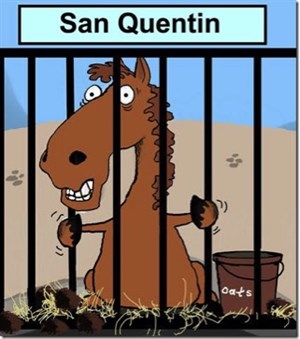
Locking one up in a small solid yard felt to him like punishment.
© Martin Taankink
I didn’t have the finances to build a bigger yard, or a conventional round yard, but then I saw a FB friend’s pic of his horses being fenced off by a portable solar electric fence kit. I bought one and set up a large round yard with two lines of electric tape.
Both my horses respect electric fencing so they never tested it out when I put them in it together for the first time.
I gradually tried it out over several days, leaving one horse inside the round yard whilst riding the other one outside the round yard. Then, over a few lengthening sessions and days, riding the horse out further and further away.
The first long ride away from home on Tom, I had my fingers crossed, but my warmblood, Vro, soon settled and was nowhere near as stressed as he had been in the small lock up yard. As I write this, Tom is getting more used to being in the round yard for short periods while I ride Vro out.
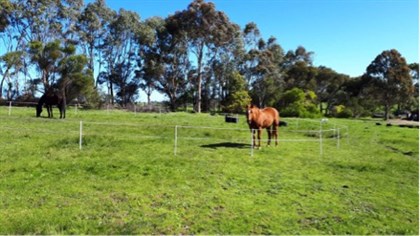
Vro and Tom, when first put into their new round yard.
© Myra King
“That’s all very well,” I hear you say, “but my problem is where the horse I’m riding out wants to get back to the one left behind.”
I do hear you, but you may not like my answer.
The fact is, there may be nothing you can do. As I said, being herd-bound is nature’s way of keeping the horse safe. More eyes to watch out for predators, and sex on tap.
There are things you can try, and of course building a strong trusting relationship with your horse is the first step. But generally speaking, your horses’ separation anxiety is not your fault.
Dealing with the hundreds of horses I have ridden, owned, or started (we called it ‘breaking’ in the sixties and seventies – awful term), I have found some horses need a buddy far more than others. This type of horse’s weaning needs to be handled extra carefully and slowly and it’s paramount that they be ridden out on their own in the early stages of starting. Once again very slowly, short rides away from the other horses, working up to longer rides out.
Here are some things you can try when riding out on a bonded horse:
1. Building a strong relationship is important. Lots of stress-free paddock work and ground work. One to one. To keep the focus on you, It helps to have their mates put in a yard nearby.
2. Increments are best. Ride away in view of their mates, and then build up to sessions out of sight for a few minutes. Try and become your horse’s favourite buddy.
3. Carry dried dates or figs, or something else they especially like. Think of these as ‘gifts’ rather than treats or bribes. Give the horse one at the end of each short (becoming longer) ride away, just before you turn it around to go back. That helps it to change its focus back to you.
4. Leave the horses left behind their favourite hay and lots of it. They may not bother to call out as much and this settling will help the one you are riding too. Also, if possible, keep them contained in a round yard or large yard, so they won’t be galloping the fences.
5. Carry music with you, have it playing loudly. Your horse may not hear his buddies neighing out quite so much. And once again it helps to change his/her focus to you up there on his back!
6. Ride out with a friend, preferably one whose horse does not agist with your own horse/horses.
Separation anxiety is not a behavioural problem but a human-caused one, by going contrary to nature. It can be dangerous for both horse and rider and may even develop health problems such as ulcers (in you both!). But conversely, with good bonding of rider and horse and patient intuitive training it may be overcome.
If not, working sympathetically with the nature of an extremely herd-bound horse may be the best and happiest solution. Riding out with their buddy, either ponying (leading) it, or ponying the buddy from them. Having a friend ride the horse’s buddy out with you works as well. Nicer for the horse, safer for you all, and more fun too.
For over 38 years Myra King has written for equine magazines, including R.M. William’s Hoofs and Horns, Rider, National Rider, The Horse’s Hoof Arizona and a self-help-column in Horse and Pony, Florida.
Martin Taankink’s cartoons have been widely published. Currently he is the Art Editor for The Heron’s Nest New York.
Myra is the author of two YA horsey novels published by Ginninderra Press. https://www.amazon.com.au/Journey-Velvet-Brown-Myra-King-ebook/dp/B0163LN7NQ https://www.amazon.com.au/Diaries-Velvet-Brown-Myra-King/dp/1760413011
Email: myra1055@gmail.com
http://myrakingprofile.webs.com/
READ THE LATEST NEWS ARTICLES HERE

